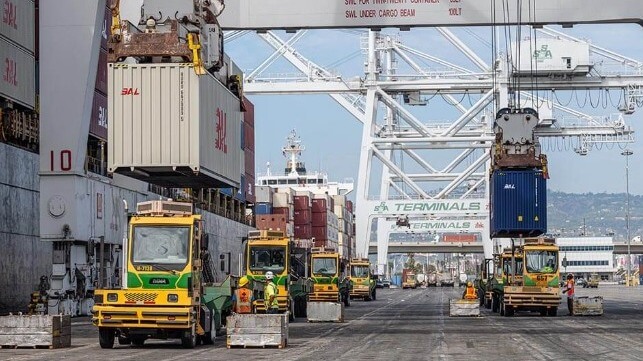West Coast Longshore Talks Progress with Health Benefits Agreement

More than two months after contract negotiations began for the West Coast longshore and warehouse workers, the first report of progress emerged in a brief joint statement. Shippers and others in the maritime industry have been awaiting word with anxiety raised after last week’s protests by truck drivers that brought the Port of Oakland to a halt.
The International Longshore and Warehouse Union and the Pacific Maritime Association representing the employers reported late on Tuesday that they have reached a tentative agreement on health benefits. They said terms for the health benefits of the contract had been reached but that they remain subject to agreement on the other issues in the negotiations.
“Maintenance of health benefits is an important part of the contract being negotiated,” both sides said in their joint statement. Rising healthcare costs, of course, have been a concern for employers in general in the United States with efforts continuing at cost shifting or sharing with employees.
While health care was one of the issues in the current round of negotiations other harder issues remain to be resolved. With the cost of living and inflation at high levels, the union had said wages and job security would be key concerns in the 2022 negotiations. However, everyone believes that the hardest to resolve issue is the use of automation in the ports. After having made some previous concessions for automation, the union was rumored to be looking to hold the line or possibly even reduce the level of automation while the employers are anxious to introduce new technologies into the ports.
Coinciding with the start of the negotiations, both sides released independent studies on the impact of automation. Predictably the employers cited efficiency gains arguing that more jobs were being created overall as the ports move higher volumes. The unions cite job losses and the broader impact on the port communities.
At the start of the negotiations on May 10, both sides agreed to a media blackout. The talks briefly paused at the end of May but have been ongoing with both sides reporting that they would continue the process beyond the contract expiration on July 1. In their only other joint statement, both sides said they were not planning any actions after the contract expiration reporting that they expected it would take a few months to complete the talks.
At stake is the contract that covers more than 22,000 longshore workers at 29 U.S. West Coast ports. The ports have a difficult history in labor relations spanning back to the 1930s and violent protests leading to the formation of the unions. In recent history, the last contract negotiations saw work slowdowns as the talks dragged on and in 2015 a federal mediator was brought in to break an impasse in the negotiations.
Trade organizations representing importers, shippers, manufacturers, and others impacted by port operations, have released several open letters calling on both sides to negotiate in good faith and remain at the table till a new contract is agreed upon. They have also called on the Biden Administration to become involved in the process to ensure the talks proceed without disruptions in the ports and further strains on the supply chain. The administration’s labor department and ports liaison have indicated that they are following the process and getting regular reports while also offering their services if they are required during the negotiations.
